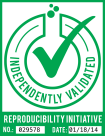TNFSF9 antibody (AA 101-200)
Quick Overview for TNFSF9 antibody (AA 101-200) (ABIN705056)
Target
See all TNFSF9 AntibodiesReactivity
Host
Clonality
Conjugate
Application
-
-
Binding Specificity
- AA 101-200
-
Cross-Reactivity
- Human, Mouse, Rat
-
Purification
- Purified by Protein A.
-
Immunogen
- KLH conjugated synthetic peptide derived from human TNFSF9
-
Isotype
- IgG
-
-
-
-
Application Notes
-
WB 1:300-5000
ELISA 1:500-1000
IHC-P 1:200-400
IHC-F 1:100-500
IF(IHC-P) 1:50-200
IF(IHC-F) 1:50-200
IF(ICC) 1:50-200
ICC 1:100-500 -
Restrictions
- For Research Use only
-
-
- by
- Immunohistochemistry Core, NYU Langone
- No.
- #029578
- Date
- 01/18/2014
- Antigen
- Lot Number
- 999892W
- Method validated
- Immunohistochemistry
- Positive Control
- Human liver
- Negative Control
- Human placental decidual cells
- Notes
- Signal was detected in positive control tissue and not in negative control tissue.
- Primary Antibody
- Antibody: Tumor necrosis factor ligand superfamily member 9 (TNFSF9)
- Catalog number: ABIN705056
- Lot number: 999892W
- Secondary Antibody
- Antibody: Biotinylated goat anti-rabbit/anti-mouse (Kit)
- Lot number: D05923BA
- Full Protocol
- Immunohistochemistry was performed on a Ventana NexES automated platform, instrument manufacturer specific reagents are italicized.
- 1. Slides were preheated in convection oven at 60°C for 30 minutes
- 2. Deparaffinization procedure: - 3 changes of Xylene, 5 minutes each - 3 changes of 100% Ethanol, 3 minutes each - 3 changes of 95% Ethanol, 3 minutes each - Rinsed in distilled water, 3 changes
- 1. Heat retrieval procedure - Slides retrieved in 10.0 mM Citrate, pH6.0 in a 1000W microwave oven (~100°C) for 15 minutes. - Slides were allowed to cool (in citrate) for 30 minutes. - Slides were washed x 3 in Distilled water
- 1. NexES instrument procedure, iVIEW DAB paraffin protocol (*abridged*): - Slide chamber warmed to 37°C
- 1. Slides rinsed with *reaction buffer* x 3
- 1. *iVIEW Inhibitor (H2O2)* applied and incubated for 4 minutes
- 1. Slides rinsed with *reaction buffer*
- 1. Antibody Application - Primary antibody diluted 1:250 in PBS (100 microliters applied/slide) - Ventana Isotype control applied neat - Slides incubated overnight at room temperature (~12 hours ~25°C)
- 1. Slides rinsed with *reaction buffer* x3
- 1. *iVIEW Biotinylated IgG* applied and incubated for 8 minutes
- 1. Slides rinsed with *reaction buffer*
- 1. *iVIEW Streptavidin-Horseradish Peroxidase* applied and incubated for 8 minutes
- 1. Slides rinsed with *reaction buffer*
- 1. *iVIEW DAB/H2O2* applied and incubated for 8 minutes
- 1. Slides rinsed with *reaction buffer*
- 1. *iVIEW Copper* applied and incubated for 4 minutes
- 1. Slides rinsed with *reaction buffer*
- 1. Slides washed in Dawn Detergent/tap water
- 1. Counterstain Procedure - Hematoxylin (Leica 560 MX) 30 seconds - Slides washed in tap water, 1 minute - Decolorized (10% Acetic Acid in 70% ethanol), 1 minute - Slides washed in tap water, 1 minute - Bluing (Austin Clear Ammonia), 1 minute - Slides washed in tap water, 1 minute
- 1. Dehydration/coverslipping procedure: - 3 changes of 95% Ethanol, 3 minutes each - 3 changes of 100% Ethanol, 3 minutes each - 3 changes of Xylene, 5 minutes each - Mounted with Permount
- 1. Imaging: Leica SCN 400F Whole Slide Scanner with Digital Image Hub and Leica Slidepath software
- Experimental Notes
- Deviations from protocol/procedure supplied by manufacturer:
- Step 1: Heated tissue 60°C for 30 minutes; manufacturer heats for 45 minutes.
- Step 2: No ethanol wash was performed during deparaffinization; manufacturer includes 1 wash of 80% ethanol for 3 minutes.
- Step 3.1: Slides heated for 15 minutes; manufacturer provides a range of 15-20 minutes.
- Step 3.2: Slides cooled for 30 minutes; manufacturer cools for 20 minutes.
- Step 4: Italicized reagents and incubation time are fixed instrument parameters.
- Step 5: Secondary species-specific serum block not used; manufacturer blocks with 5% normal goat serum for 2 hours.
- Step 8.1: Antibody diluted in PBS at 1:250; manufacture recommends dilution range (1:100-1:500). No primary antibody diluent recommended.
- Step 8.2.1: Primary antibody incubated at room temperature overnight; manufacturer incubates overnight 4°C with agitation.
- Tissue Interpretation (limited): • TNFSF9: Under the staining parameters described above, placenta was weakly cytoplasmic positive (trophoblastic and decidua cells). Liver hepatocytes were weakly stained. Substantial signal detected in limited number of other tissues, including kidney, prostate, and skin.
- • I-NC (Isotype negative control): No signal detected
- • B-NC (Blank negative control): No signal detected
- Signal Localization: - Signal to noise was adequate with predominately cytoplasmic subcellular localization observed. Nuclear staining was rare and no distinct membrane signal was detected.
Validation #029578 (Immunohistochemistry)![Successfully validated 'Independent Validation' Badge]()
![Successfully validated 'Independent Validation' Badge]() Validation ImagesFull Methods
Validation ImagesFull Methods -
-
Format
- Liquid
-
Concentration
- 1 μg/μL
-
Buffer
- 0.01M TBS( pH 7.4) with 1 % BSA, 0.02 % Proclin300 and 50 % Glycerol.
-
Preservative
- ProClin
-
Precaution of Use
- This product contains ProClin: a POISONOUS AND HAZARDOUS SUBSTANCE, which should be handled by trained staff only.
-
Storage
- 4 °C,-20 °C
-
Storage Comment
- Shipped at 4°C. Store at -20°C for one year. Avoid repeated freeze/thaw cycles.
-
Expiry Date
- 12 months
-
-
- TNFSF9 (Tumor Necrosis Factor (Ligand) Superfamily, Member 9 (TNFSF9))
-
Alternative Name
- TNFSF9/CD137L
-
Background
-
Synonyms: CD137L, 4-1BB-L, Tumor necrosis factor ligand superfamily member 9, 4-1BB ligand, 4-1BBL, TNFSF9
Background: Cytokine that binds to TNFRSF9. Induces the proliferation of activated peripheral blood T-cells. May have a role in activation-induced cell death (AICD). May play a role in cognate interactions between T-cells and B-cells/macrophages.
-
Gene ID
- 8744
-
UniProt
- P41273
-
Pathways
- Activated T Cell Proliferation, Cancer Immune Checkpoints
Target
-

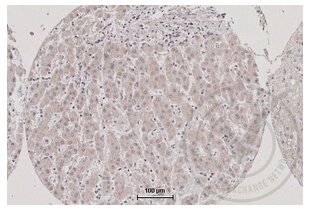
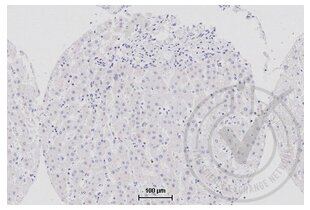
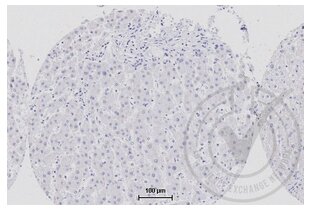
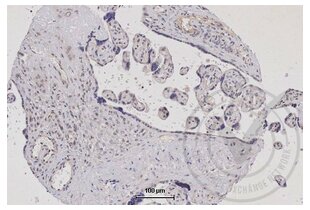
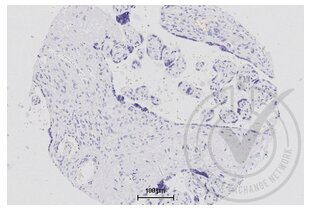
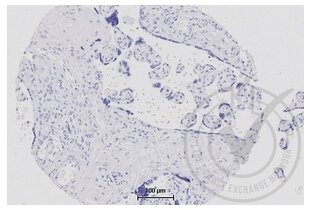
 (1 validation)
(1 validation)